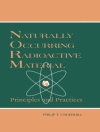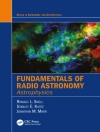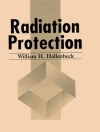Conservation laws, reflecting the symmetry of space and time, play a vital role in understanding the surrounding world. Conservation laws allow us to explain very different phenomena from a unified point of view. The textbook illustrates this principle taking examples from mechanics, optics, nuclear physics, solid-state physics, and medicine. They include, for example, positron annihilation used in experiments aimed at neutrino registration and in the positron emission tomography for patient diagnostics; the functioning of solar cells, infrared detectors, and light emitting diodes (LEDs); slowing down fission neutrons toward achieving a nuclear chain reaction; jet propulsion of a rocket and an octopus; principles of magnetic resonance imaging and principles standing behind fission and fusion nuclear reactions; and more.
O autorze
Emil Zolotoyabko is Professor Emeritus in the Department of Materials Science and Engineering of the Technion-Israel Institute of Technology. For six years he served as Faculty Dean and for four years as a member of the Technion’s Standing Committee. He was awarded the Schlesinger Prize for Encouragement of Research, the Henry Taub Prize for Excellence in Research, the Technion Excellence in Teaching, and held the Abraham Tulin Academic Chair. Emil Zolotoyabko has authored more than 200 scientific publications, five books and four chapters in books focused on different problems of solid-state physics and materials science. Special attention was paid to the development of new X-ray diffraction methods and their applications for studying the structure and dynamical characteristics of various materials systems. Main scientific achievements include: direct wave summation method in X-ray diffraction simulations; development of Mössbauer diffraction to study low-frequency lattice dynamics by inelastic scattering in crystals at phase transitions; fast stroboscopic X-ray diffraction and imaging techniques for investigating crystal dynamics on a nanosecond time scale; energy-variable X-ray diffraction for microstructural characterization with sub-micron spatial resolution; measurement of the speed of X-rays; discovery by high-resolution X-ray diffraction of the organics-associated anisotropic lattice distortions in the organic/inorganic biocomposites grown by living organisms.












